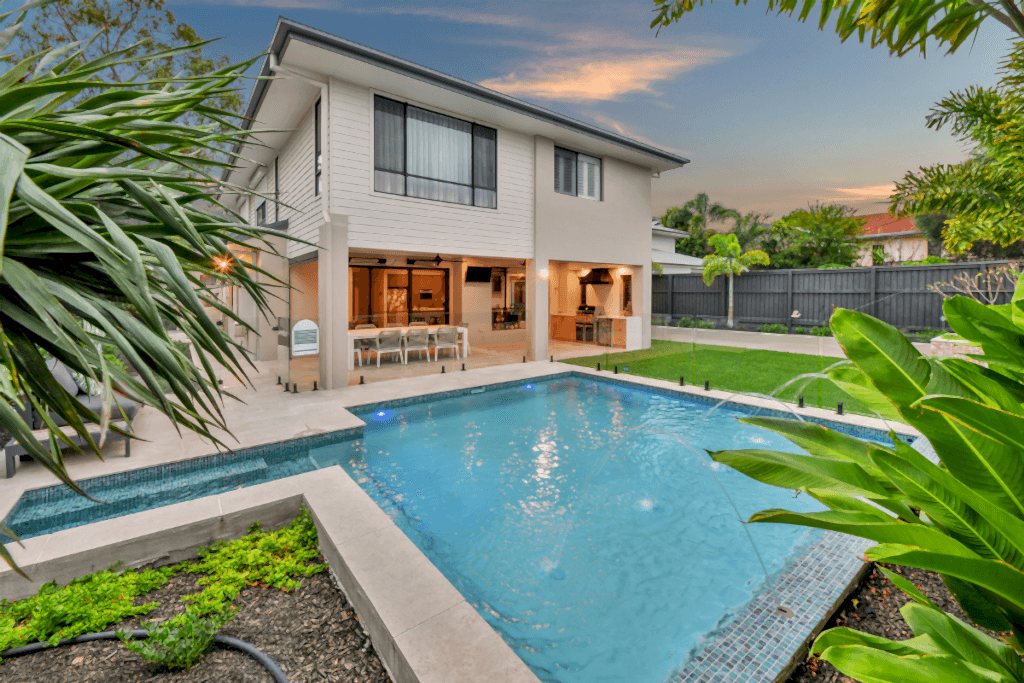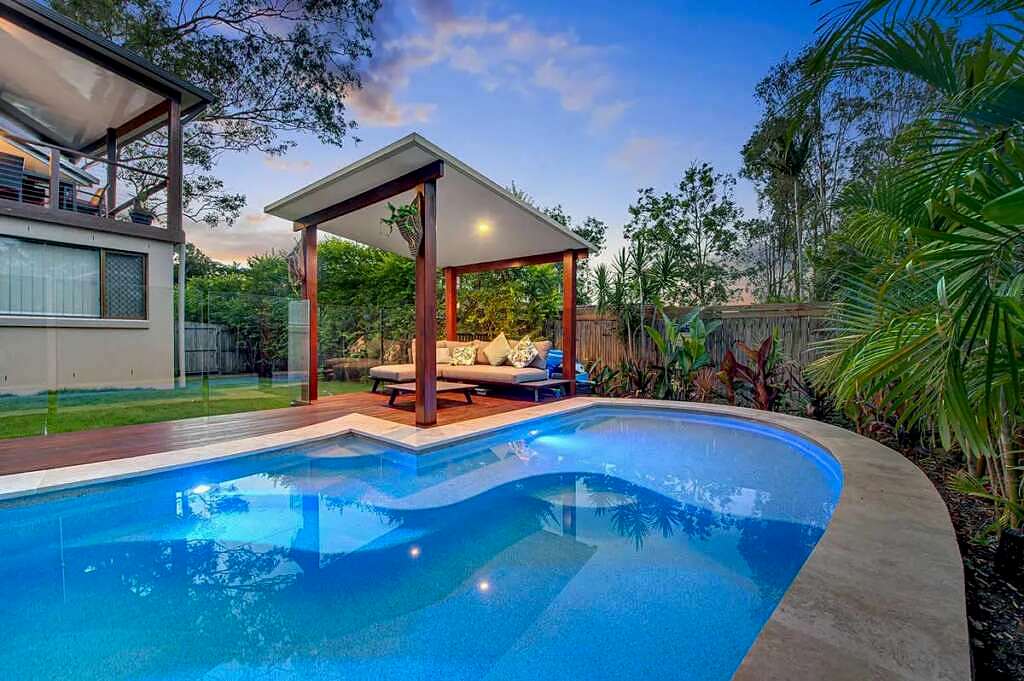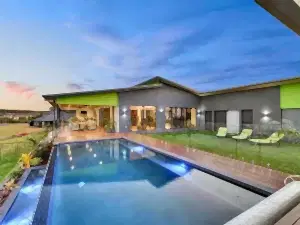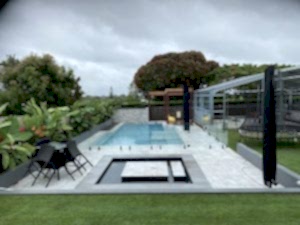From Kidney Beans to Contemporary Elegance
In Australia, the backyard swimming pool has become a cultural icon. From afternoon barbies and a quick dip afterwards to birthday parties, footy breakup celebrations, or just low-key hangouts, most Australians have fond memories of spending time in a backyard pool. While the memories are always great, a lot has actually changed in the pool world, reflecting changing lifestyles, architectural trends, and technological advancements. But one thing will always be the same: when a pool is involved, the hangout is bound to be better.
The Post-War Pool Boom: 1950s-1960s

The 1950s and early 1960s marked the beginning of Australia’s love affair with swimming pools. At this stage, a backyard pool was still reserved for those of upper socioeconomic status, meaning that most of the pools around were your classic rectangular memorial public pools. These pools started to be built nationwide to commemorate and honour those who served in military conflicts while providing people with an area for recreational swimming or water-based sports and competitions. Many of these pools are still open today, still serving the community over 70 years later.
Those who could afford a backyard pool often opted for the rectangular style that was all the rage, often paired with a diving board at the deep end. However, soft sloping shapes that would develop into the famous kidney style also began to emerge.
For many families, these pools represented the achievement of the Australian dream—a place where children could play, and families could entertain themselves during the long summer months.
The Kidney Era: 1970s-1980s

The 1970s and 1980s saw Australian pools take on more playful, organic shapes. The round or kidney-shaped pool became the quintessential Australian backyard feature, often surrounded by brick paving and tropical landscaping. These curved designs were seen as more natural and aesthetically pleasing than their rectangular predecessors.
During this era, fibreglass and vinyl pools also started to appear on the scene, offering a more affordable alternative to concrete. This allowed homes to bring the pool experience to their backyards. Concrete pools, of course, continued to offer the peak of luxury, being the material of choice for public pools, hotels, and upper-class properties.
Brick coping, terracotta surrounds and curved lines were key features of pools built in this era. Many pools from this era featured deep ends of 2-2.5 meters to accommodate diving boards – a standard feature during this time.
The Transition Years: 1990s
The 1990s marked a transitional period in Australian pool design, with a growing focus on safety and practicality. Pool fencing became mandatory across Australia, changing the aesthetic relationship between pools and the surrounding landscape. This period saw the declining popularity of diving boards as safety concerns grew.
Aside from these considerations, pool designs didn’t change much. Depending on the owner’s preference, kidney-shaped or rectangular pools continued to dominate. Due to building constraints and a newfound focus on restricting access, these pools were often positioned further from the house, often at the back of the property in their own sectioned-off area.
This decade also witnessed early experiments with more dynamic water features, improved lighting systems, and the beginning of the trend toward more energy-efficient pool equipment. The introduction of salt chlorination systems in Australia really found its footing during this period, ironing out many of the kinks from when it was introduced back in the 70s.
Contemporary Elegance: 2010s-2020s

Moving into the 21st century brought a dramatic shift in Australian pool design philosophy. Influenced by boutique hotels and international design trends, pools began to be viewed as architectural elements rather than standalone recreational features. Clean lines, precise geometry, and visual integration with the home became paramount. Around this time, people began to grow tired of the kidney shape and wanted something sleeker.
The modern Australian pool from this era typically features:
- Straight, clean edges with square corners
- Dark interior finishes (deep blues, blacks, and greys) creating mirror-like water effects
- Flush coping where the pool edge meets seamlessly with surrounding paving
- Minimalist design elements with hidden equipment and streamlined appearances
- Infinity edges and wet decks that create visual drama
- Integration with outdoor kitchens, living areas, and fire features
Thanks to technological advancements, pool styles that were previously reserved for the uber-wealthy, like Infinity pools, became accessible to the public. Styles that were only seen at high-end hotels or in the homes of billionaires started popping up in Australian homes, allowing more people to enjoy luxury.
Technological advances enabled these design changes, with improved structural engineering making vanishing edges and cantilevered designs possible for residential applications. LED lighting transformed nighttime pool enjoyment, while automation systems simplified maintenance.
Contemporary Trends – The Merging Of Styles
The most recent evolution in Australian pool design embraces a more organic approach, though with sophisticated execution far removed from the kidney shapes of previous decades. Contemporary homeowners still enjoy the geometric lines but want more rugged textures like pebble gardens and wood decking rather than tiled areas. Homeowners desire a subtle blend between cultures, offering all the luxuries of modern pool architecture with natural touches to blur the harsh lines.

Today’s “natural” pools feature:
- Gently curved edges
- Natural stone or wooden surrounds with colours matched to the local environment
- Integration with natural plantings and landscape elements
- Shallow beach entries with textured surfaces
This trend reflects growing environmental consciousness and desire for pools that appear as though they belong naturally in the landscape.
The Multi-Functional Approach
Perhaps the most significant change in Australian pool design philosophy is the shift from viewing pools as single-purpose features to seeing them as multi-functional spaces. Modern Australian pools often act as the centre of an all-in-one entertaining space. Many pools are now accompanied by a nearby patio, where parents can work the BBQ while the kids swim, or have alfresco living areas incorporated, so there’s a place to chill out however you choose. Now more than ever, pools aren’t just a place to cool off; they’re hubs for community, socialisation and gathering, where Aussie families can entertain, play and relax all year round!
This functional approach recognises that pools represent a significant investment, and homeowners want to maximise usage beyond the hottest summer days.
Looking Forward
The swimming pool remains an enduring feature of the Australian home, but its form continues to evolve, reflecting our relationship with water, outdoor living, and architectural trends. From the kidney-shaped centrepiece of backyard barbecues to today’s architectural water features, the Australian pool tells a story of our evolving lifestyle and design sensibilities.






